Introduction
Founded in 1724, St. Petersburg State University is located in St. Petersburg, Russia. It is a national higher education institution in the Russian Federation and one of the oldest and largest universities in Russia. It is considered to be the best comprehensive university in Russia after Moscow University. It has trained many outstanding talents, including many Russian political elites such as Vladimir Putin and Dmitry Medvedev.
Overview
Student size: As of December 2023, there are more than 25,000 students of all types, including more than 1,000 foreign students.
Faculty: There are more than 10,000 faculty and staff, more than 5,000 professors, including 40 academicians.
History
In 1724, Peter I founded the St. Petersburg Academy of Sciences, which had an affiliated university. Therefore, it is said that St. Petersburg University was founded by Peter the Great in 1724, but the affiliated university was not in good condition afterwards. Between 1803 and 1819, St. Petersburg University ceased to exist for a time because the new charter of the Academy of Sciences stipulated that there should be no educational institutions under it. In 1819, Alexander I approved the reconstruction of St. Petersburg University through the reform of the General Teachers' College. In 1914, the school was renamed Petrograd University. In 1924, it was renamed Leningrad University in memory of Lenin. After the disintegration of the Soviet Union in 1991, it was restored to its original name, St. Petersburg State University.
Foundation time
1724.
School strength
Teaching quality: As the top comprehensive university in Russia, it has high teaching quality, a complete teaching system and rich teaching resources. It focuses on cultivating students' comprehensive literacy and innovation ability, and provides students with high-quality education.
Research achievements: The school has achieved fruitful research results in many fields. Many professors and graduates have won important international awards such as the Nobel Prize. Their research results have an important influence in the Russian and even international academic circles.
International Exchange: Actively carry out international cooperation and exchanges, maintain close cooperative relations with more than 590 universities around the world, are active members of many international academic exchange projects, and have established representative offices in many countries, providing students with broad international exchange opportunities.
Institutional nature
Public research university.
Educational philosophy
Focus on cultivating students' independent thinking ability, innovative spirit and practical ability, emphasize the combination of basic theory and practical application, and strive to cultivate high-quality talents with global vision and social responsibility, and contribute to the development and progress of society.
Key laboratories and disciplines
Key laboratories: The school has an advanced scientific research park with 23 resource centers, which concentrates the most advanced research equipment and provides good conditions for scientific research.
Key disciplines: Mathematics, physics, chemistry, biology, geology, geography, international relations, management, philosophy, history, economics, Oriental studies, medicine, psychology and other disciplines are all advantageous disciplines of the school.
Department
The school has 12 scientific research institutes and 16 faculties, covering a wide range of disciplines, such as the School of Biology, the School of Oriental Studies, the School of Mathematics and Mechanics, the School of Foreign Languages, etc.
Ranking
QS ranking: among the top 300 universities in the world, ranked second in Eastern Europe and Central Asia, and ranked second in Russia in the QS graduate employment competitiveness ranking.
Expenses
Tuition fees vary by major and level of study. The school offers a variety of options, including more than 490 bachelor's, master's and doctoral programs taught in Russian, and 24 master's programs taught in English, German, Spanish, French and Italian. International students can also apply for places funded by the Russian government, enjoy full tuition exemption and monthly allowances, etc.
Campus
Teaching facilities: The school has many teaching buildings, laboratories, libraries and other teaching facilities, including the Gorky Science Library with a collection of 700 books. Wanben also has many famous museums, archives and other cultural facilities, such as the Mendeleev Museum and Academic Archives, the Mineral Exhibition Hall of the Mineral Teaching and Research Section of the Department of Geology, etc., which provide rich resources for students' study and research.
Dormitory conditions: The school provides dormitories for students, with more than 12,000 beds, which can meet the accommodation needs of students.
-

Peter the Great St.Petersburg Polytechnic University
-
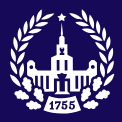
Moscow State University M. V. Lomonosov
-
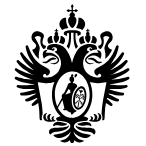
St. Petersburg State University
-
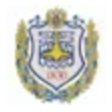
Bauman Moscow State Technical University
-
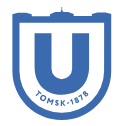
Tomsk State University
-
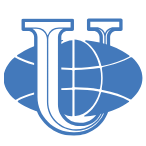
Peoples' Friendship University of Russia
-
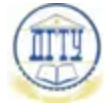
Don State Technical University
-

Moscow Institute of Physics and Technology
-
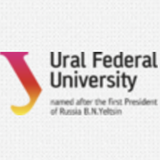
Ural Federal University
-

Kazan Federal University
-

Mesoamerican University
-

Istmo University
-

Mariano Galvez University of Guatemala
-

Regional University of Guatemala
-

Galileo University
-

Francisco Marroquín University
-

Rafael Landívar University
-

University of the Valley of Guatemala
-

University of San Carlos of Guatemala
-

Technological Institute of Tlaxcala Plateau
-

Golfo University
-

Technological University of South Sonora
-

Technological University of Huejotzingo
-

Tizimín Institute of Technology
-

Chilpancingo Institute of Technology
